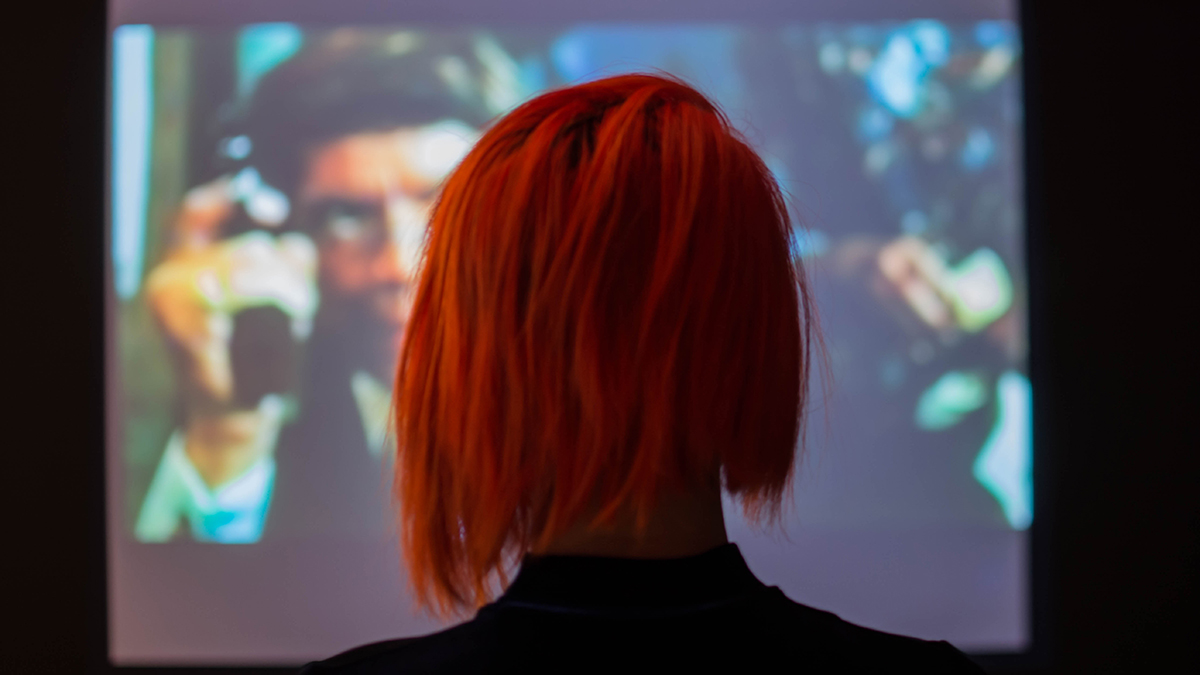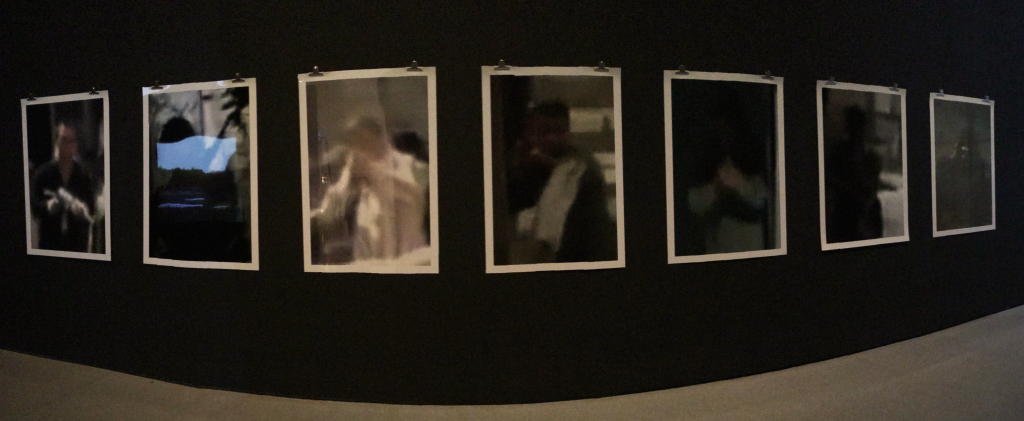Alfredo Jaar: Lament of the Images
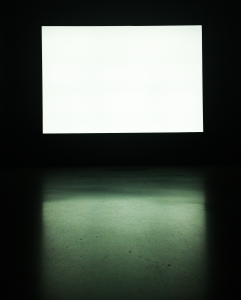
As I entered the room, I had a hard time adjusting to the blinding white screen after concentrating on the white text in the entrance hall. It immediately reminded me of Hiroshi Sugimoto’s “Theaters.” At first, my eyes couldn’t fully open. There was a tingling sensation from the back of my head. The longer I stared at the screen the harder it was to focus on what I was writing down. I felt overwhelmed by this sudden influx of light entering my pupils. There is something ominous about this room. Nothing was hanging from the walls and nothing to see except the giant white screen. The longer I spent in this space the more anxious I yearned to climb out of this black box.
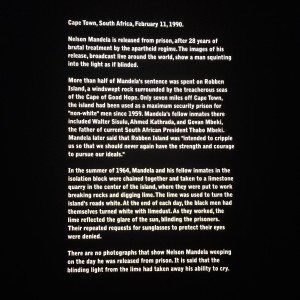 Out of the three stories, Nelson Mandela’s stood out the most to me. Light is a phenomenon that impacts everything in our lives. In regards to sight, light translates colors and images through our eyes so that we can see all the brilliant things in the world. In Mandela’s case, the blinding light from the limestone deprived him of an important human sensation. He also states that his sentence was “intended to cripple us so that we should never again have the strength and courage to pursue our ideals.”
Out of the three stories, Nelson Mandela’s stood out the most to me. Light is a phenomenon that impacts everything in our lives. In regards to sight, light translates colors and images through our eyes so that we can see all the brilliant things in the world. In Mandela’s case, the blinding light from the limestone deprived him of an important human sensation. He also states that his sentence was “intended to cripple us so that we should never again have the strength and courage to pursue our ideals.”
In the Pennsylvania/Bill Gates story, the removal of images leaves behind a blank white space. By preserving almost 17 million images within a mine, it removes knowledge from the public domain. Since it’ll take “453 years to digitalize the entire archive,” those buried images will not see the light of day for a couple centuries.
The Kabul story references light as a cover up for the carpet bombings over Afghanistan. As it states, “the agreement also produced an effective white-out of the operation.” By buying off all the images, people are left with no evidence of this incidence. The empty space left behind proves the true power of the government has on media and the public domain.
Hito Steyerl: November (film)
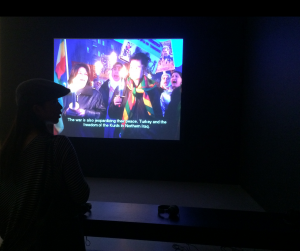 In Steyerl’s film, “November,” she portrays the shift of revolution through her experiences and that of Andrea Wolf. She also touches topics of women during the revolution and protests blossoming into uprisings. In the films, Andrea Wolf shifted from an actress to a figure of the revolution. In that way, her transition through those films immortalized her. Martial arts also has a prominent role in the underlying cause of revolution. The sign of a lone tiger in a martial arts film is used to symbolize the struggling versus the rich in Turkey. Like the lone fighter Bruce Lee, his films taught people that an individual has the mental and physical strength to stand up to higher power. Another shift in the film was the shift in the use of Super 8 cameras to Digital/VCR cameras.
In Steyerl’s film, “November,” she portrays the shift of revolution through her experiences and that of Andrea Wolf. She also touches topics of women during the revolution and protests blossoming into uprisings. In the films, Andrea Wolf shifted from an actress to a figure of the revolution. In that way, her transition through those films immortalized her. Martial arts also has a prominent role in the underlying cause of revolution. The sign of a lone tiger in a martial arts film is used to symbolize the struggling versus the rich in Turkey. Like the lone fighter Bruce Lee, his films taught people that an individual has the mental and physical strength to stand up to higher power. Another shift in the film was the shift in the use of Super 8 cameras to Digital/VCR cameras.
By calling her film “November,” Steyerl tells the story of the aftermaths of the revolution. Since October is the “period of revolutionary struggle,” November follows with the calm and the process of rebuilding. With Steyerl’s statements,“Whoever is an image is an object” and “Images do not represent reality, they create reality, they are second nature,” once an image has been capture it becomes a property of the person who took it. Just like the Stereyl’s fictional films, they ultimately hold truths in them. Even after her death, Andrea lives on through the posters of her plastered sex stores and also as a revolutionary figure.
Rabih Mroé: The Fall of a Hair: Blow Ups
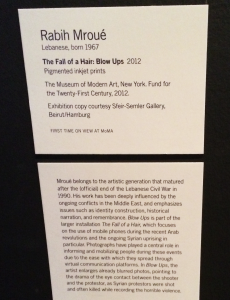 Other than the required assigned work, this series of images stood out to me. The images of seven unidentifiable men stood facing me as I watched the Hito Stereyl film, and followed me towards the Alfredo Jaar installation. Something about the blurred faces and the mystery hidden behind their gazes pulled me in. After reading the meaning behind the piece, I found it even more interesting how the internet has become a bigger platform for images of revolution to easily circulate.
Other than the required assigned work, this series of images stood out to me. The images of seven unidentifiable men stood facing me as I watched the Hito Stereyl film, and followed me towards the Alfredo Jaar installation. Something about the blurred faces and the mystery hidden behind their gazes pulled me in. After reading the meaning behind the piece, I found it even more interesting how the internet has become a bigger platform for images of revolution to easily circulate.
Featured image courtesy of Das Fuerst


